Thanksgiving is my favorite holiday. It’s great getting together with family and friends. We always take turns—going around the dinner table—sharing what we are most thankful for. The comments tend to focus on health and supportive family members.
According to the weather forecasters, most of us won’t be thankful for the weather on Thursday when we gather for Thanksgiving. It’s going to be stormy around the country. Depending on the winds, the organizers of the Macy’s Thanksgiving Day Parade might have to ground their balloons.
For those of us in the stock market, the questions are whether there will be a Santa Claus rally this year, and whether it will inflate stock prices with too much hot air. I am predicting that the S&P 500 will reach 3500 by the end of next year. That’s an increase of 12.5% over Friday’s close, which itself represents a year-to-date gain of 24.1%.
My main worry currently is that the S&P 500 will get to 3500 well ahead of schedule in a meltup scenario. My 3100 target for this year was surpassed on 11/15. However, that was actually well behind schedule, since 3100 had been my target for the end of last year. Everything was working out fine for my forecast through 9/20/18, when the S&P 500 peaked at 2930.75. But then recession fears emerged as investors fretted that the Fed was set on an overly restrictive monetary policy course and that the trade war with China was escalating. The S&P 500 proceeded to plunge by 19.8% through the day before Christmas.
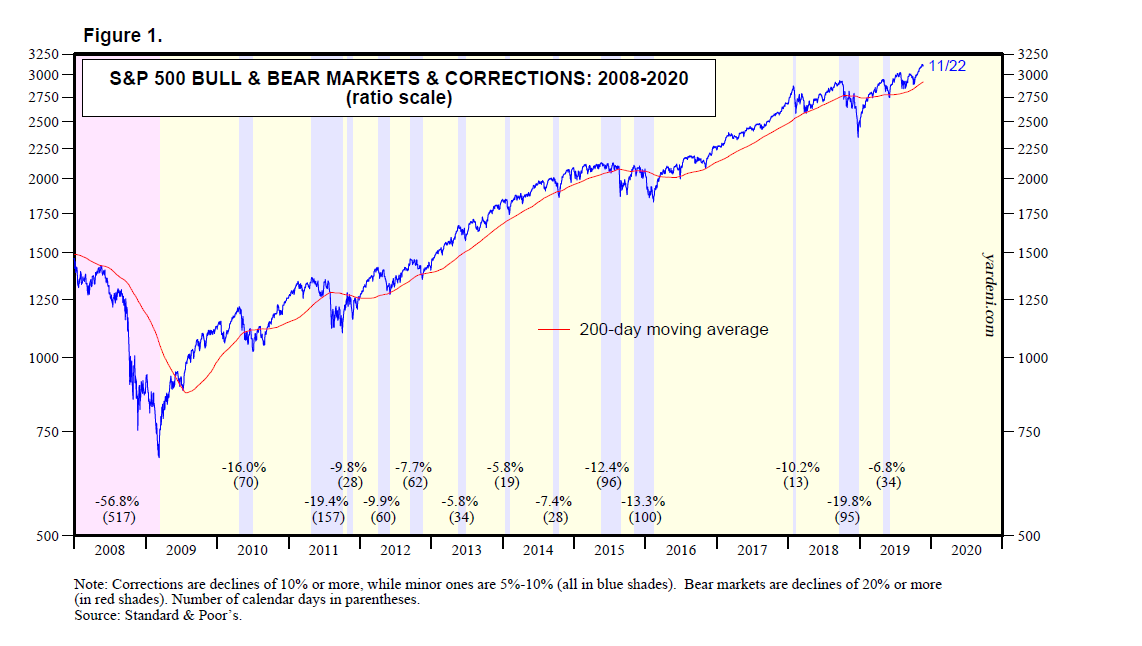
The day after Christmas, investors came to their senses, betting that Fed officials would do the same and that the U.S. and China would eventually work out a trade deal. As a result, there has been a meltup of sorts in the S&P 500 and its 11 sectors since the day before last Christmas through Friday’s close, as follows: Information Technology (50.0%), Industrials (35.3), Communication Services (35.2), Financials (33.7), S&P 500 (32.3), Consumer Discretionary (30.5), Real Estate (26.9), Consumer Staples (25.4), Materials (25.4), Utilities (21.7), Health Care (21.6), and Energy (10.0).

However, it doesn’t look like a meltup when we compare the market’s performance since last year’s 9/20 peak: Utilities (18.8%), Information Technology (15.3), Real Estate (14.4), Communication Services (12.5), Consumer Staples (11.0), S&P 500 (6.1), Health Care (4.2), Financials (3.4), Industrials (2.7), Consumer Discretionary (1.0), Materials (-2.4), and Energy (-20.7).
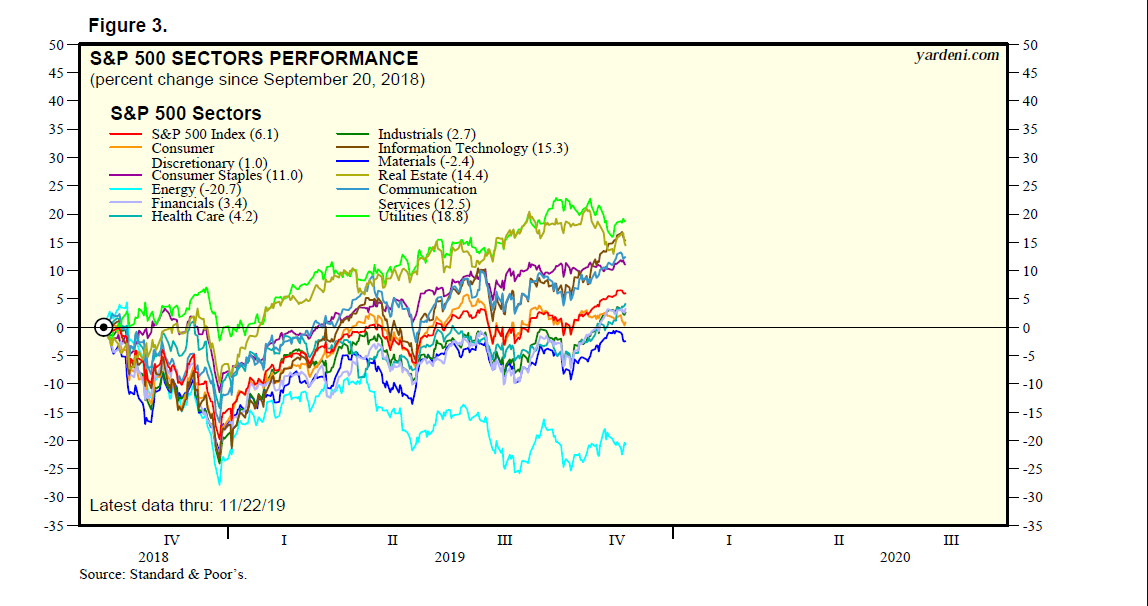
When we look at fluctuations in the S&P 500’s valuation multiple, however, the picture does look like a meltdown during 2018 followed by a meltup this year.
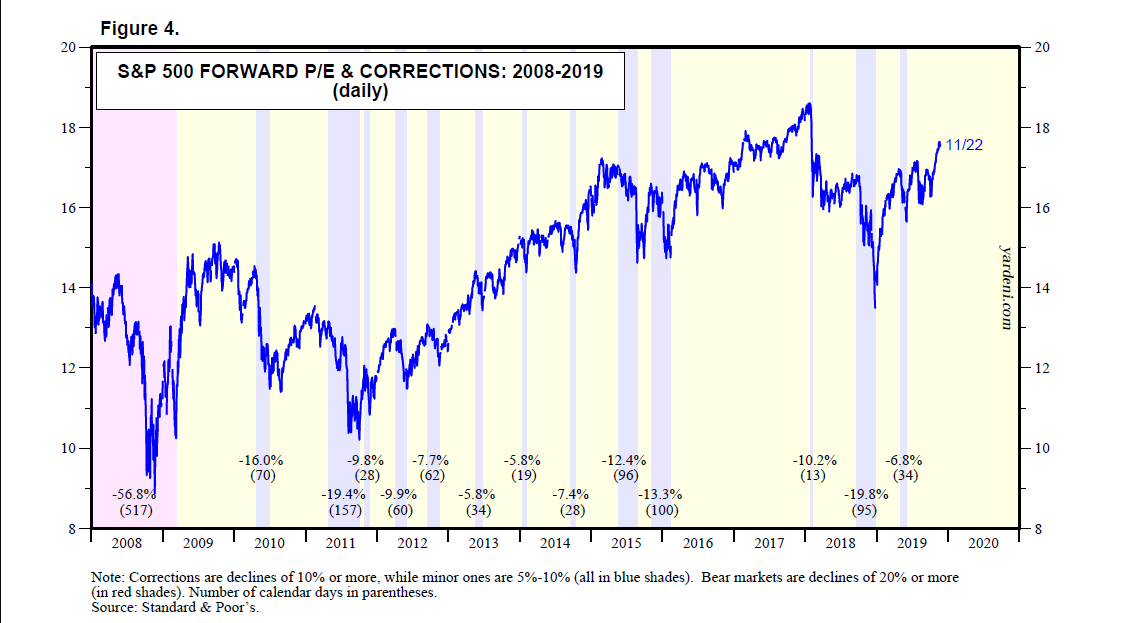
The forward P/E of the S&P 500 peaked at 18.6 on 1/23/18, the highest reading during the current bull market. It crashed 28% to 13.5 on 12/24/18. It soared back up to 17.5 last week.
Let’s consider some of the possible events during the holiday season that might fuel the meltup or trigger panic attack #66. (See our table of the 65 panic attacks since the start of the current bull market.) Let’s start with the meltup scenario:
(1) Growth. On the meltup side, investors are starting to anticipate better global economic growth next year, while inflation is expected to remain subdued. This year’s earnings growth slowdown to near zero was mostly attributable to tough y/y comparisons because last year’s growth rate was boosted by Trump’s tax cut and higher Energy earnings. Earnings comps should be easier next year, with industry analysts currently projecting gains for S&P 500 operating earnings of 9.1% in 2020 and 10.8% in 2021.

I think the analysts are too optimistic, as they often have been in the past. Earnings should grow in line with revenues growth, which is currently expected to be 5.2% in 2020 and 4.7% in 2021. Analysts tend to be more realistic about revenues growth than earnings growth.
(2) Monetary policy. The major central banks are likely to persist with their ultra-easy monetary policies. The Fed probably will keep the federal funds rate unchanged through next year’s election. However, the Fed started buying $60 billion per month in Treasury bills during mid-October and will continue doing so through mid-2020.
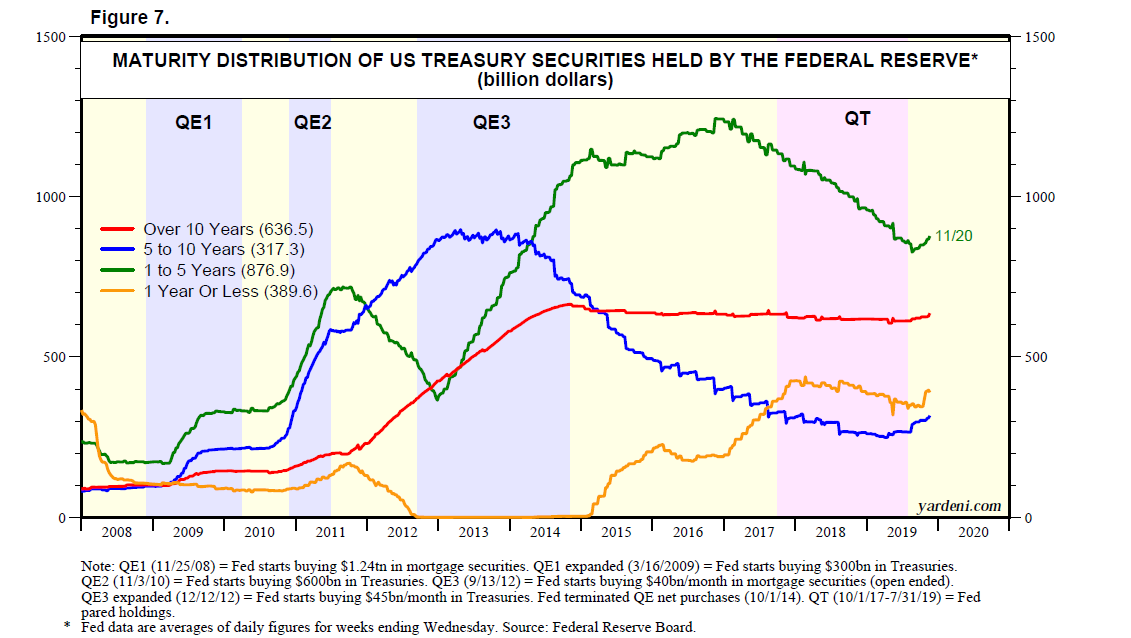
On the other hand, the Fed’s holdings of mortgage-backed securities continue to decline.
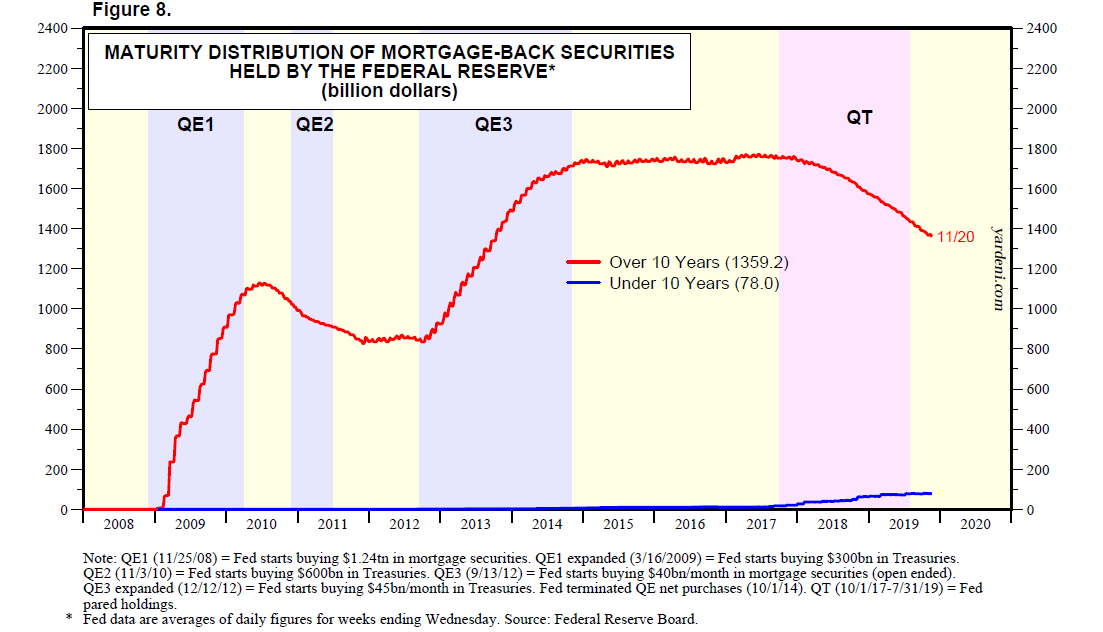
Now let’s consider some of the possible triggers of yet another panic attack and why the next one should be followed by yet another relief rally rather than a bear market:
(3) Trade war. Both China and the US have a clear interest in getting a phase-one trade deal completed relatively soon to calm financial markets and reduce the drag on their economies from the uncertainty attributable to the trade war. However, it won’t be a done deal until the deal is done.
Trump wants to secure a big phase-one announcement. He is expecting that the Chinese will commit to purchases of US agricultural goods that he can tout as an important win during his re-election campaign. The signing of a phase-one deal could slide into next year as the two countries tussle over Beijing’s demand for more extensive tariff rollbacks.
In any event, Beijing trade officials aren’t likely to sit down to discuss a phase-two deal before the US election, in part because they want to wait to see if Trump wins a second term.
If there is no deal, stock prices could crater. However, Trump views the DJIA as his most important poll. So he would likely respond to a market selloff with some encouraging words. More importantly, Fed officials would most likely signal a willingness to ease some more if trade headwinds threaten to depress the US economy.
(4) Hong Kong. An 11/25 NBC News article reported: “Pro-democracy forces swept Hong Kong district council elections over the weekend, boosting pressure on the city’s Beijing-backed government to listen to protesters’ demands for greater freedoms.
“China responded sternly to the landslide in the vote widely seen as a referendum on public support for the anti-government movement. Foreign Minister Wang Yi said that no matter how the situation in Hong Kong changes, the semiautonomous region is part of China.”
Beijing has avoided directly intervening so far, preferring to let Hong Kong’s embattled leader Carrie Lam handle the situation. In this age of smartphones, Beijing has been deterred from cracking heads and having the carnage live-streamed around the world.
(5) Middle East. Yesterday, Brig.-Gen. Zvika Haimovich, former commander of the Israel Defense Forces’ Aerial Defense Division, warned that Iran is planning a “multi-directional” attack against the state of Israel together with its proxies, and that the Jewish state needed to prepare for it now.
Iran has been gripped by an economic crisis since the US restored painful sanctions on 5/8/18 after withdrawing from the 2015 nuclear deal. Last week, there were widespread riots in Iran following a fuel price hike by the government. During the violence, dozens of banks, gas pumps, and police stations were torched across the Islamic republic.
Iranian officials accused the US, Britain, Israel, and Saudi Arabia of stoking the unrest. Yesterday, the head of Iran’s Islamic Revolutionary Guard Force threatened to destroy Israel, the US, and other countries as he addressed a pro-government demonstration.
There's plenty to worry about. But let's enjoy Thanksgiving and look forward to a Santa Claus rally, maybe.
